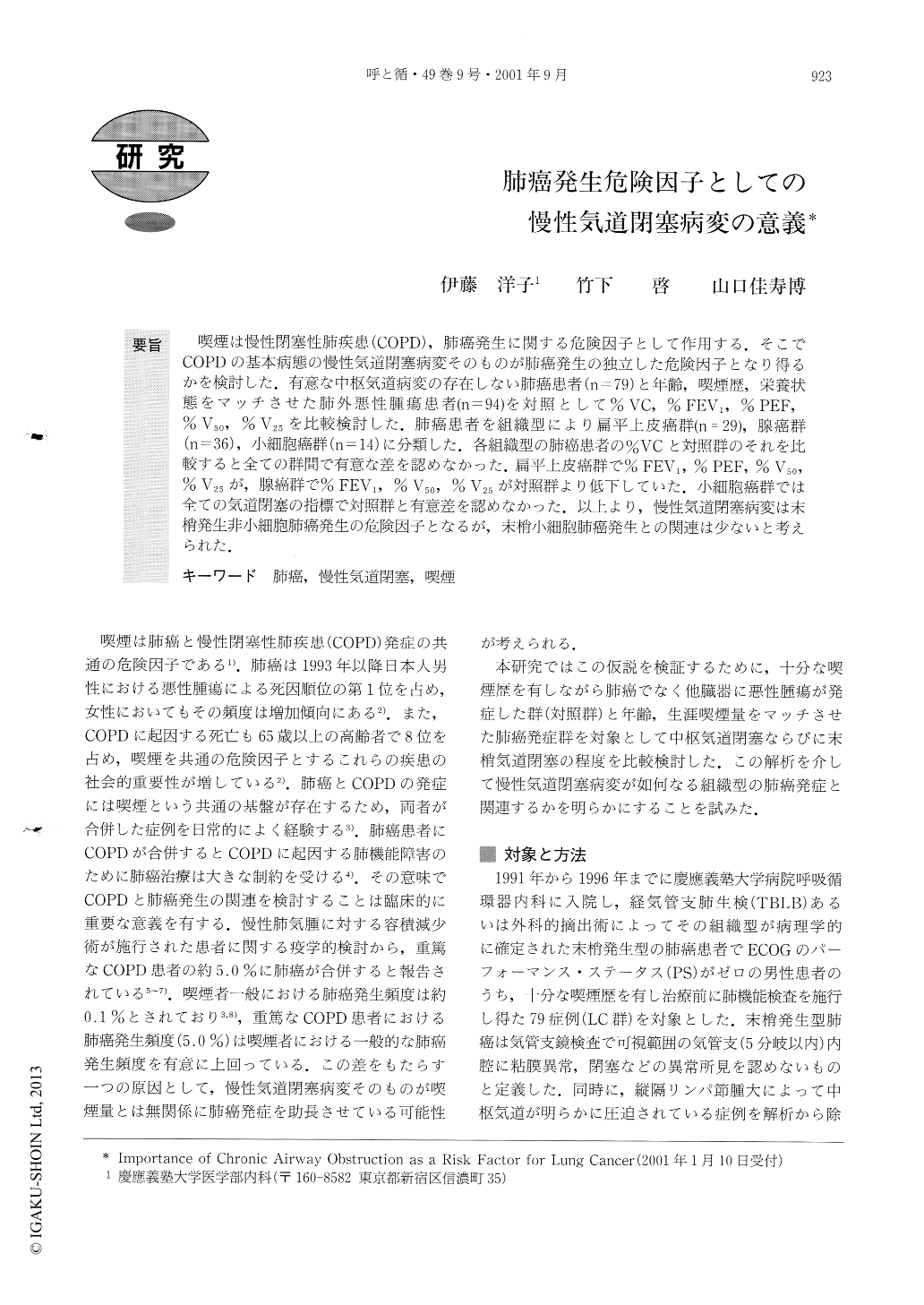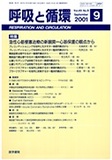Japanese
English
- 有料閲覧
- Abstract 文献概要
- 1ページ目 Look Inside
- サイト内被引用 Cited by
要旨 喫煙は慢性閉塞性肺疾患(COPD),肺癌発生に関する危険因子として作用する.そこでCOPDの基本病態の慢性気道閉塞病変そのものが肺癌発生の独立した危険因子となり得るかを検討した.有意な中枢気道病変の存在しない肺癌患者(n=79)と年齢,喫煙歴,栄養状態をマッチさせた肺外悪性腫瘍患者(n=94)を対照として%VC,%FEV1,%PEF,%V50,%V25,を比較検討した.肺癌患者を組織型により扁平上皮癌群(n=29),腺癌群(n=36),小細胞癌群(n=14)に分類した.各組織型の肺癌患者の%VCと対照群のそれを比較すると全ての群間で有意な差を認めなかった.扁平上皮癌群で%FEV1,%PEF,%V50,%V25が,腺癌群で%FEV1,%V50,%V25が対照群より低下していた.小細胞癌群では全ての気道閉塞の指標で対照群と有意差を認めなかった.以上より,慢性気道閉塞病変は末梢発生非小細胞肺癌発生の危険因子となるが,末梢小細胞肺癌発生との関連は少ないと考えられた.
Although chronic airway obstruction (CAO) and lung cancer are cardinal sequelae to cigarette smoking, it has not been conclusively settled whether CAO may increase the risk predisposing to the development of lung cancer. To address this issue, various pulmonary-function tests were conducted for lung cancer patients without endobronchial lesions (LC group, n=79). The LC group was divided into three subgroups based on the pathological findings, i.e., squamous cell carcinoma (n= 29), adenocarcinoma (n =36), and small cell carcinoma (n= 14). Subjects, suffering from extra-thoracic malignancies but not lung cancer, in whom age distribution, smoking exposure and body mass index (BMI) were matched to those of the LC group were enrolled as the control (ETM group : n=94). All the patients selected were male and their ECOG performance status was not impaired. % predicted values of VC, FEV1, PEF, V50, and V25 calculated from the equation constructed from the data obtained for nonsmoking healthy Japanese subjects were used as indicators expressing the extent ofCAO. While %VC values were comparable between any groups, %FEV1, %PEF, %V50 and %V25 in the squamous cell carcinoma group deteriorated more severely than those in the ETM control group. %FEV1, %PEF, %V50 and %V25 values in the adenocarcinoma group were significantly reduced as compared to those in the ETM group. None of the pulmonary function parameters of the small cell carcinoma group differedfrom those in the ETM group. These findings may suggest that chronic airway obstruction plays a role as an additional risk factor for developing non-small cell lung cancer but not small-cell lung cancer.

Copyright © 2001, Igaku-Shoin Ltd. All rights reserved.


